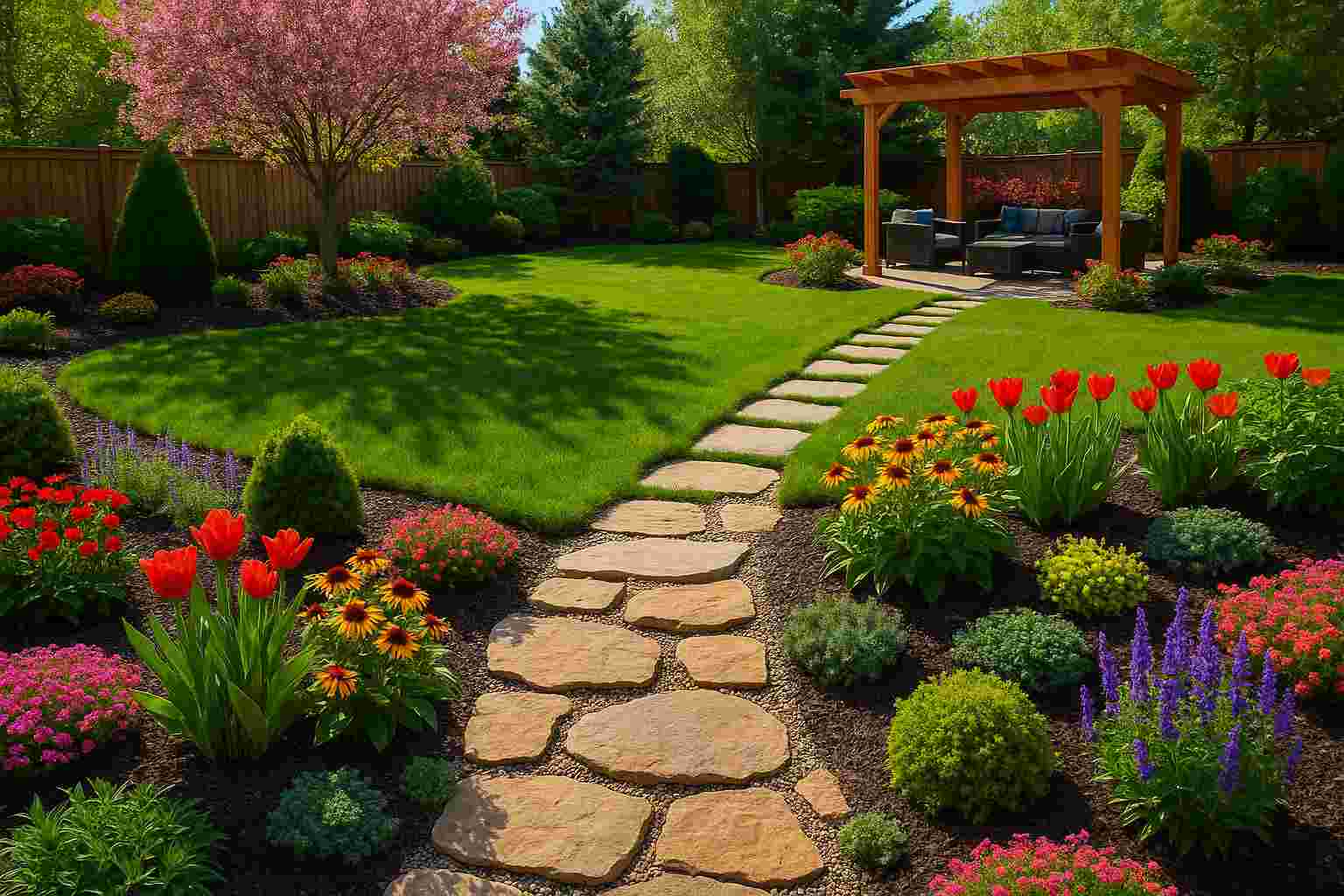A thoughtfully landscaped yard transforms your home into a personal retreat and adds value to your property. Whether you’re aiming for elegance, low maintenance, or a lush oasis, landscaping blends artistry and function. From vibrant gardens to hardscape features, here’s how you can create outdoor spaces that truly shine.
1. Lush Perennial Borders
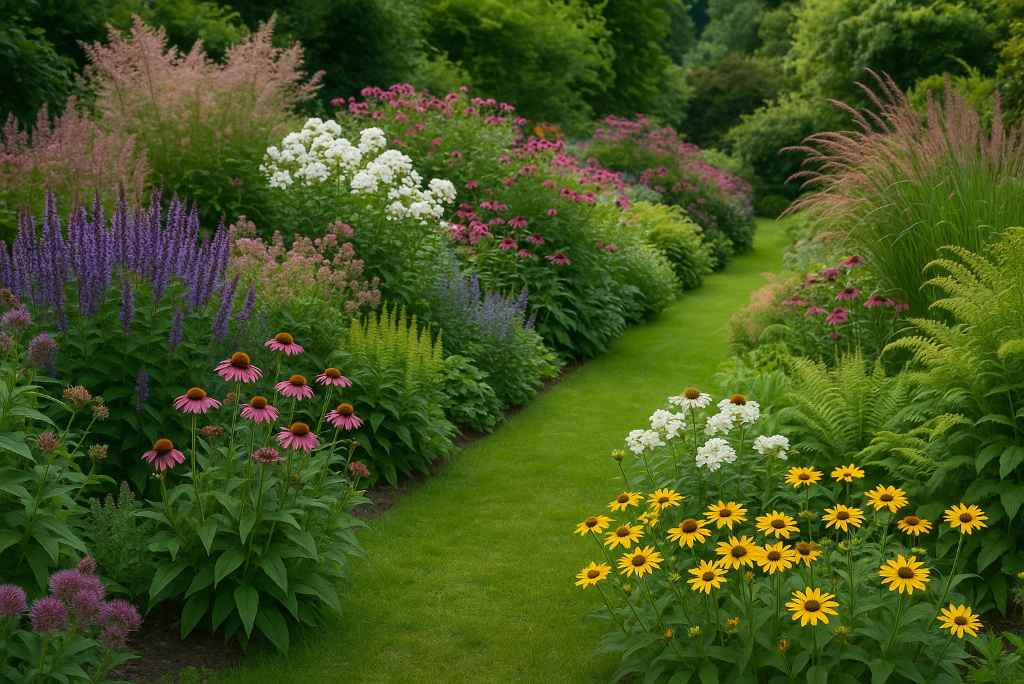
Perennials bring reliable colour and texture year after year, reducing the need for constant replanting. A well-designed border might layer tall blooms like delphiniums or echinacea at the back, with medium plants such as black-eyed Susans and low-growing varieties like creeping phlox at the edge. This approach creates depth and visual interest throughout the growing season.
Mixing flower shapes—spikes, globes, and daisies—adds dynamism. For practical benefits, perennials attract pollinators like bees and butterflies, which help sustain local ecosystems. Compared to annual flower beds, perennial gardens can be more cost-effective over time. However, they require planning for staggered bloom times to avoid bare spots.
2. Native Plant Gardens
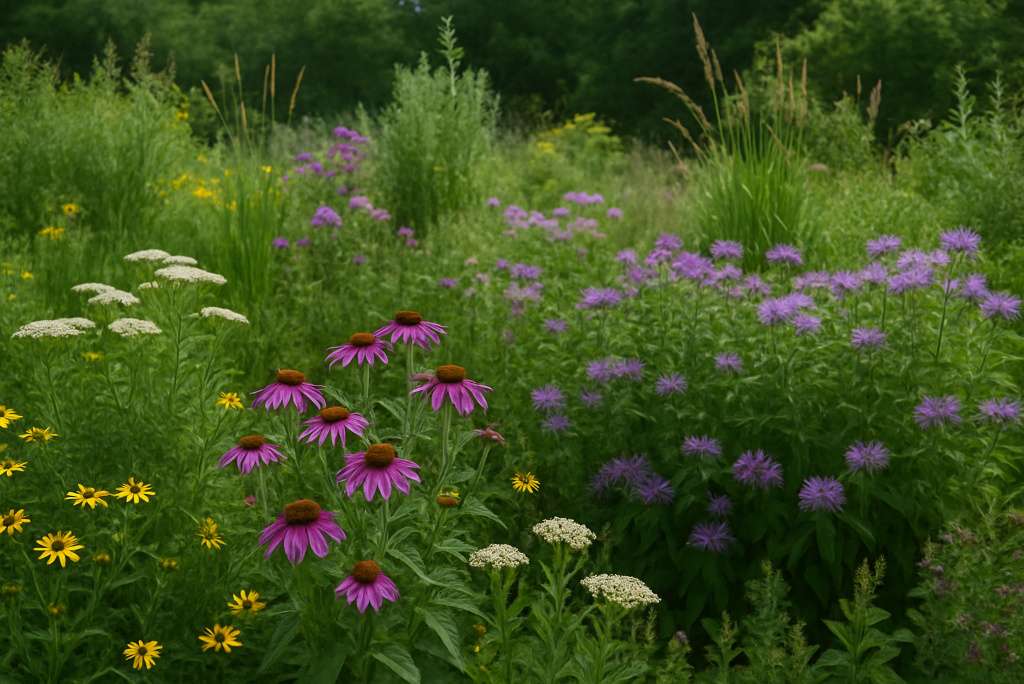
Native plants thrive with less water, fertiliser, and pesticide use because they’re adapted to local conditions. In the front yard, native shrubs like serviceberry or viburnum provide seasonal interest, while native grasses or wildflowers in the backyard create a meadow-like feel.
Compared to exotic plants, natives support wildlife more robustly, including birds, bees, and beneficial insects. They also help reduce erosion and improve soil health. A native garden doesn’t have to look wild; thoughtful design can create tidy, attractive spaces that suit modern aesthetics.
3. Dramatic Garden Lighting
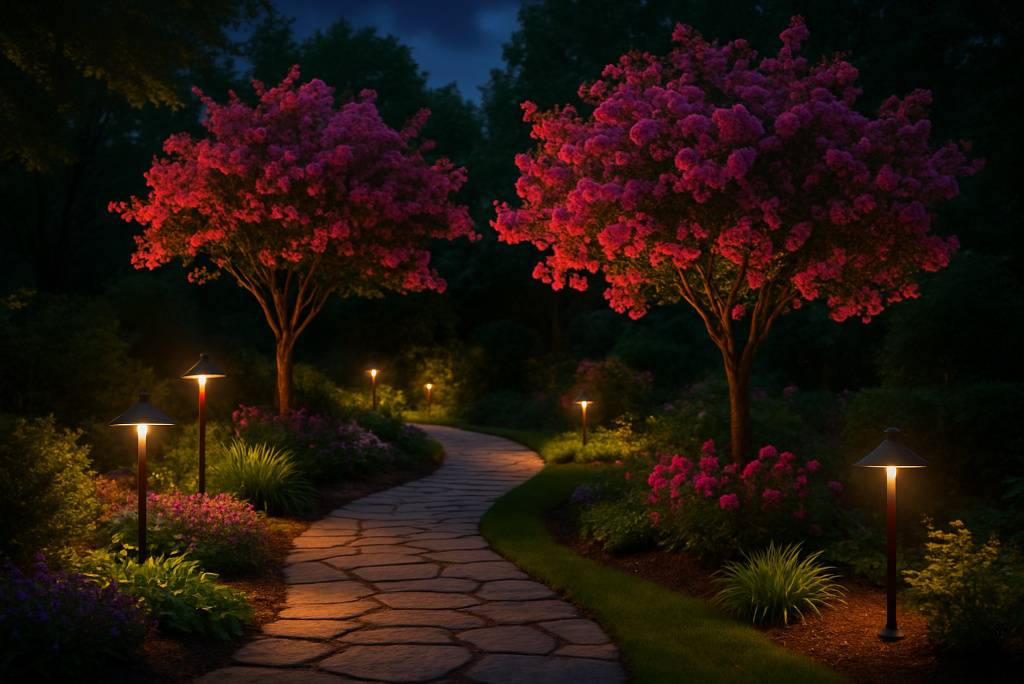
Landscape lighting extends the enjoyment of your yard into the evening and enhances safety around paths and entrances. Uplighting trees creates drama, while downlights cast soft, moonlit effects. String lights along fences or pergolas evoke a festive atmosphere perfect for entertaining.
Modern LED fixtures are energy-efficient and long-lasting, outpacing older halogen lights in cost savings and durability. Smart lighting systems allow control via apps, adding convenience. A combination of path lights, spotlights, and decorative lanterns ensures varied effects.
4. Inviting Stone Pathways
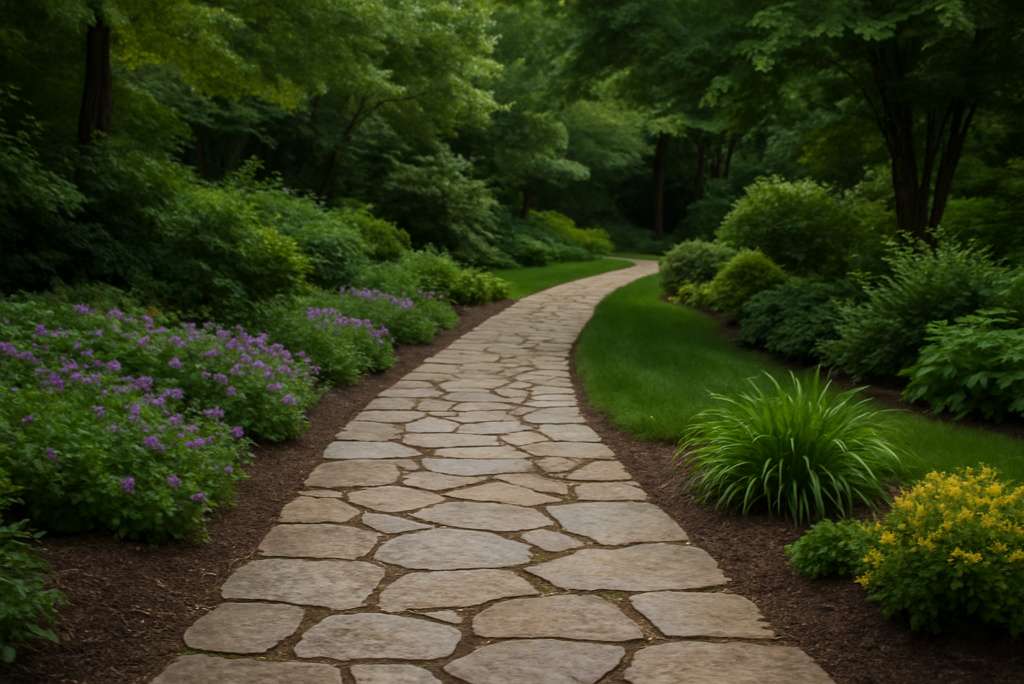
Stone pathways guide visitors while adding timeless beauty to your landscape. Flagstone laid in irregular patterns gives a casual, organic look, while tightly set pavers evoke formality. Natural stone is durable and blends seamlessly into gardens, especially when moss or groundcovers grow between joints.
Compared to concrete, stone often offers a higher-end appearance and can be cooler underfoot in hot weather. However, it can be more expensive initially. To prevent weed growth and shifting, install pathways over compacted gravel and sand.
5. Vibrant Flowering Trees

Flowering trees like dogwoods, crabapples, and redbuds provide multi-season interest with spring blossoms, lush foliage, and fall colour. They’re excellent focal points in both front and backyards, creating structure and visual drama without overwhelming smaller spaces.
Unlike shrubs, flowering trees add vertical elements and shade while still preserving sightlines in compact yards. Maintenance involves proper pruning and pest monitoring, but many varieties are relatively low-care.
6. Edible Landscaping
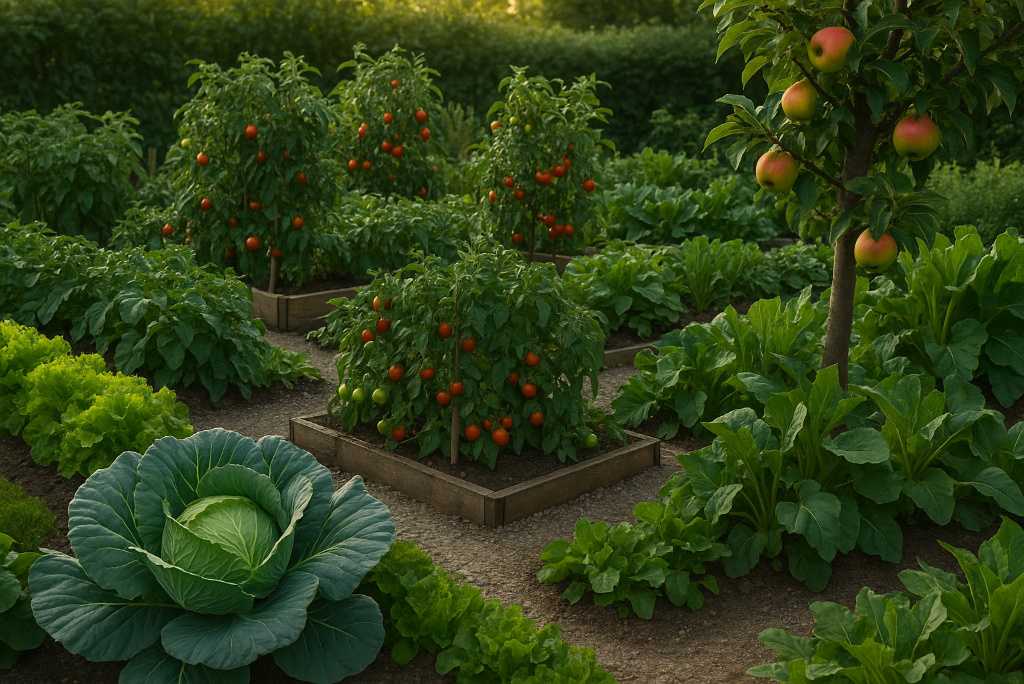
Why not merge beauty with function? Edible landscaping integrates food-producing plants like fruit trees, herbs, and vegetables into ornamental beds. Blueberry bushes, for example, boast pretty white flowers in spring, vibrant fruit in summer, and brilliant fall foliage.
Edible plants can replace traditional shrubs or fill containers for small spaces. Compared to traditional vegetable patches, edible landscaping blends seamlessly into decorative designs, ensuring your yard stays attractive. However, it may require more maintenance and attention to pests.
7. Sustainable Rain Gardens
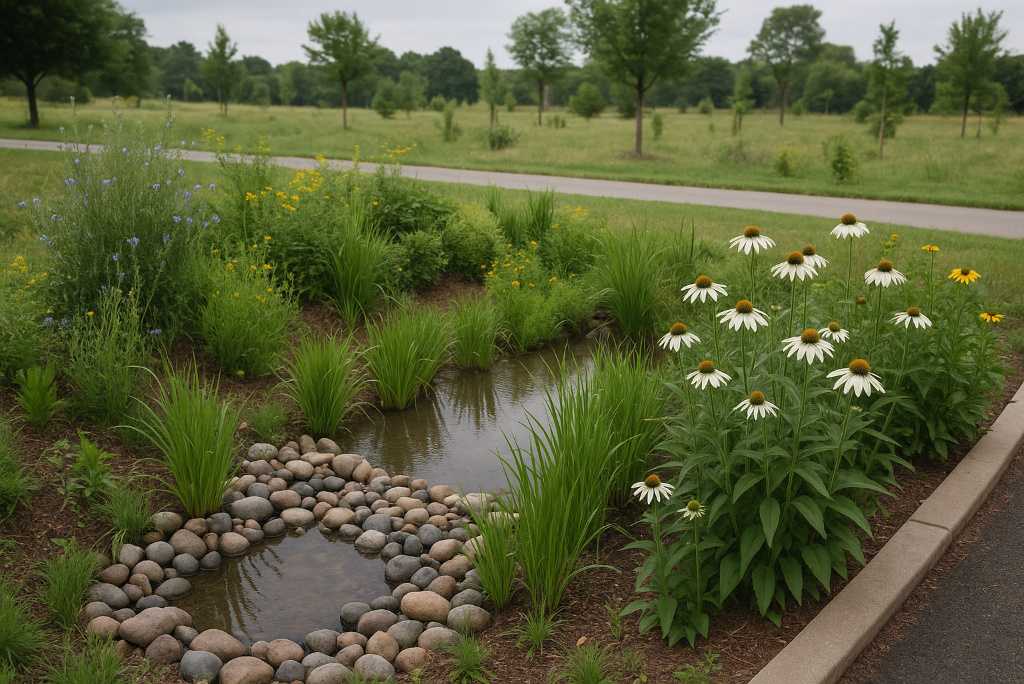
Rain gardens collect stormwater runoff and allow it to filter naturally into the ground. Typically planted with water-loving species like irises, swamp milkweed, and native sedges, rain gardens reduce flooding and pollution.
Compared to traditional lawn areas, rain gardens enhance biodiversity and are low-maintenance once established. They’re particularly effective in urban environments with frequent hard surfaces. Installing a rain garden does require understanding your yard’s drainage patterns.
8. Zen-Inspired Rock Gardens
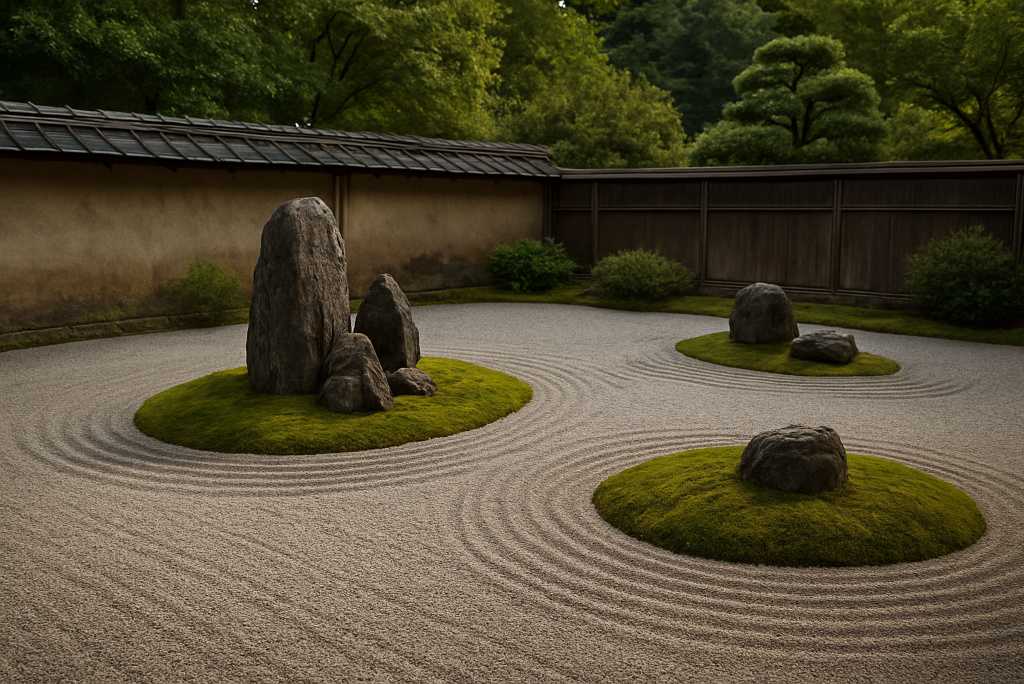
Rock gardens create serene spaces using stones, gravel, and low-growing plants like sedums or dwarf conifers. Inspired by Japanese gardens, they’re perfect for slopes, dry areas, or places where soil conditions limit traditional plantings.
Compared to lush, high-water landscapes, rock gardens are low-maintenance and drought-tolerant. They offer year-round interest through varied textures and subtle colour changes. However, designing a balanced rock garden requires artistic placement of stones and thoughtful plant selection.
9. Outdoor Living Rooms
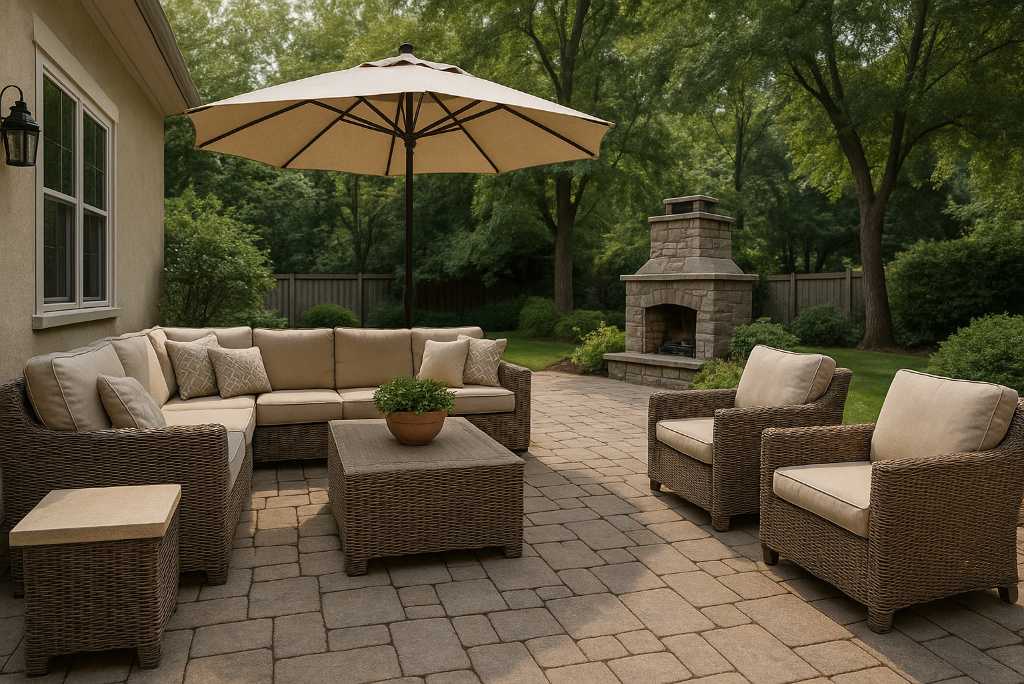
Blurring the line between indoors and out, outdoor living rooms include seating areas, fire pits, and even televisions under pergolas or gazebos. Comfortable furniture and durable rugs create a welcoming ambiance for entertaining or relaxing.
Compared to simple patios, these spaces require more investment but significantly boost home value and usability. Materials should withstand weather, and thoughtful layouts ensure smooth traffic flow. Consider amenities like built-in seating or outdoor kitchens.
10. Water Features for Serenity
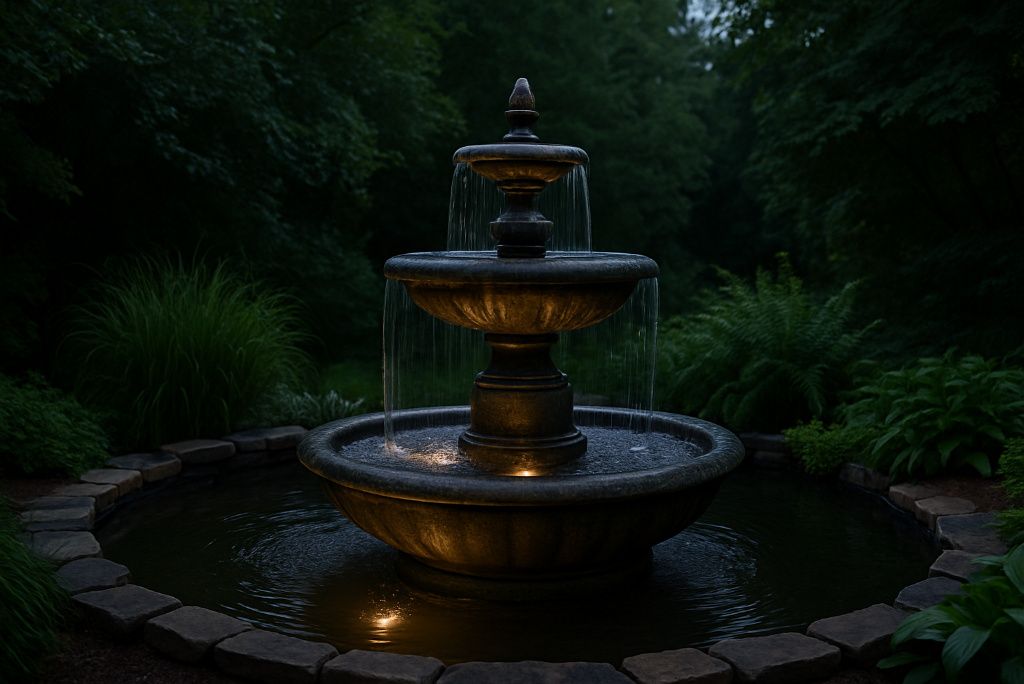
Water features bring soothing sounds and reflective surfaces to your landscape. Small backyard ponds, bubbling fountains, or cascading waterfalls fit various budgets and yard sizes. Water attracts birds and beneficial insects, contributing to a vibrant ecosystem.
While water features add tranquillity and elegance, they require upkeep to prevent algae and maintain water quality. Compared to static features like sculptures, they introduce movement and sound, enhancing sensory appeal.
11. Colorful Container Gardens
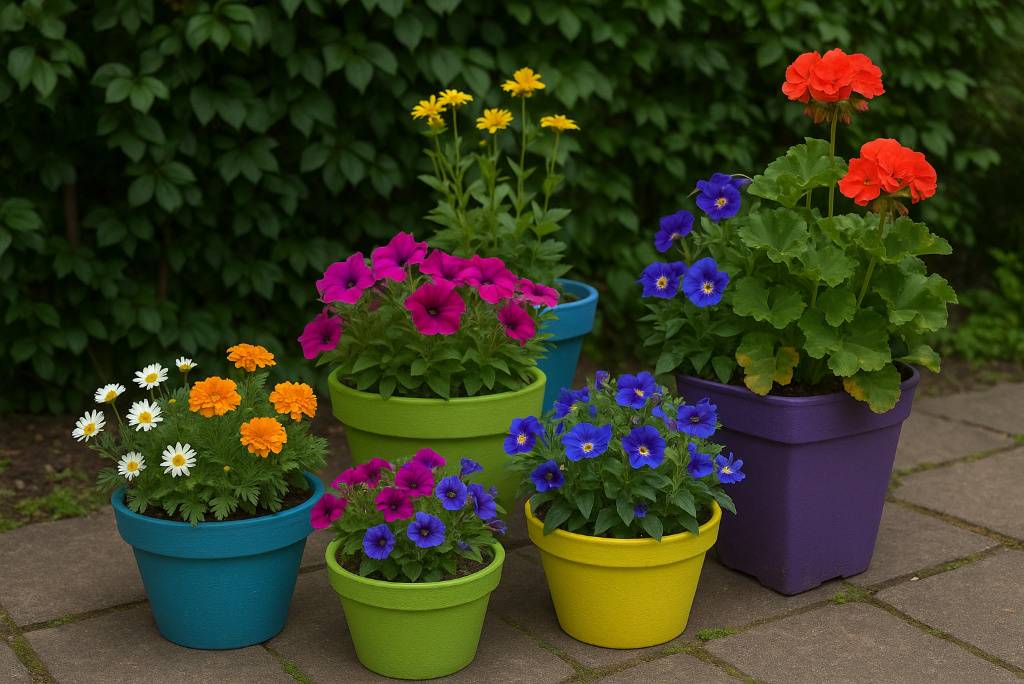
Container gardens deliver flexibility and colour to porches, patios, and decks. Large pots filled with annuals, perennials, or even small shrubs create focal points and can be rearranged as seasons change. They’re ideal for renters or small spaces.
Unlike traditional beds, containers allow you to control soil quality precisely, reducing disease risks. However, they dry out faster and require more frequent watering. Mixing heights, textures, and colours results in dramatic displays.
12. Low-Maintenance Groundcovers
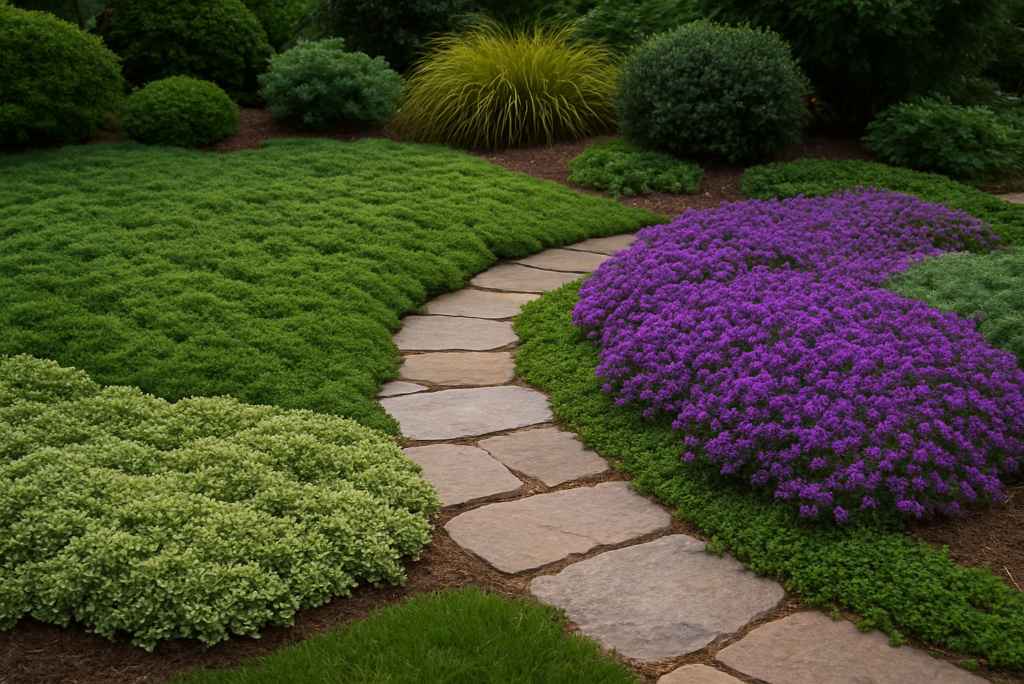
Groundcovers like creeping thyme, mondo grass, and vinca minor suppress weeds and replace traditional turf. They’re excellent for slopes, shady spots, or areas where mowing is difficult. Compared to lawns, groundcovers demand less water and fertiliser while offering diverse colours and textures. Some varieties bloom, adding seasonal interest. The primary challenge is selecting species suitable for your climate and soil conditions.
13. Privacy Hedges and Screens
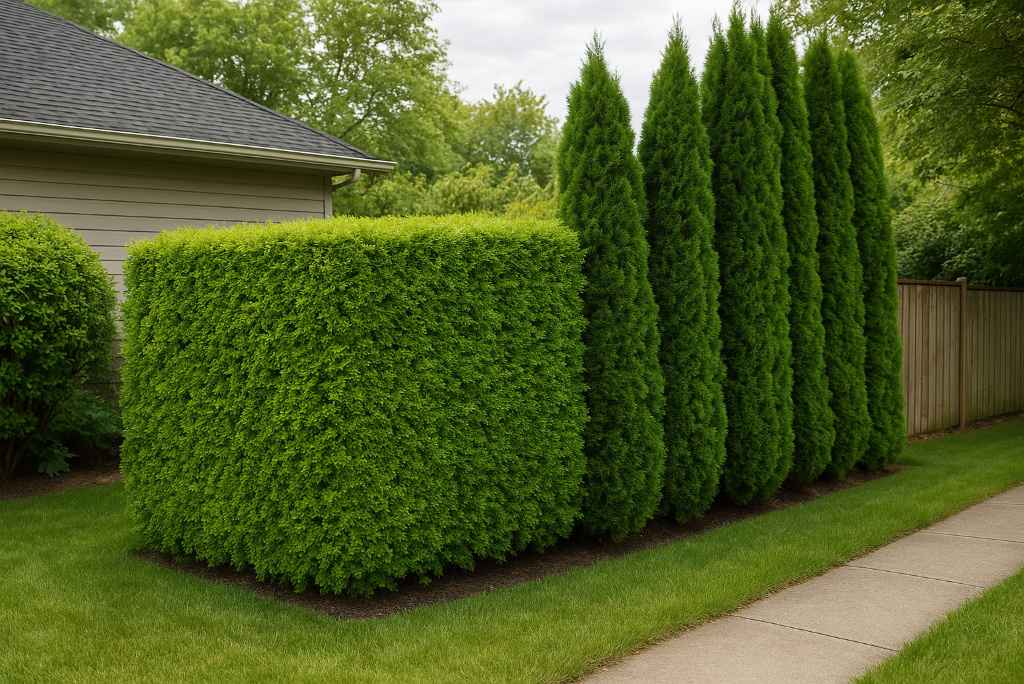
Natural privacy solutions include evergreen hedges like arborvitae or bamboo screens. Compared to fencing, living screens soften yard boundaries and contribute to wildlife habitats. While slower to establish than fences, hedges offer texture, colour, and seasonal changes. However, they require pruning and monitoring for pests. Strategic placement enhances aesthetics while blocking unwanted views.
14. Vertical Gardens

Vertical gardening maximises small spaces by growing plants upward. Wall planters, trellises, and stacked pots hold flowers, herbs, or even strawberries. Vertical designs add visual interest and can conceal unsightly walls or fences. Compared to ground beds, vertical gardens improve air circulation and can reduce pest issues. However, they may dry out faster and require careful watering. Creative designs can become striking art installations.
15. Wildflower Meadows
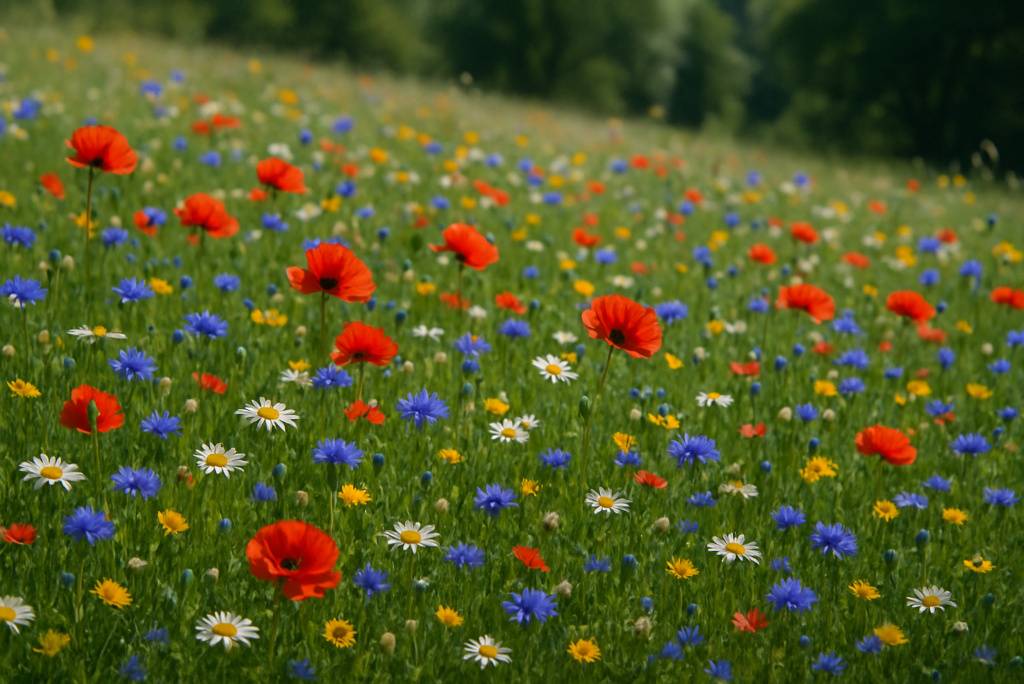
For a low-maintenance, ecologically friendly backyard, consider transforming part of your lawn into a wildflower meadow. Meadows support pollinators, reduce mowing, and change beautifully throughout the year. While less formal than traditional gardens, meadows can be tailored to look tidy by defining borders or adding mown paths. They may take a few seasons to establish, but once mature, they thrive with minimal care.
Disclaimer: This article is for informational purposes only and does not constitute professional landscaping or horticultural advice. Always consult local regulations and professionals before undertaking significant landscaping projects.

